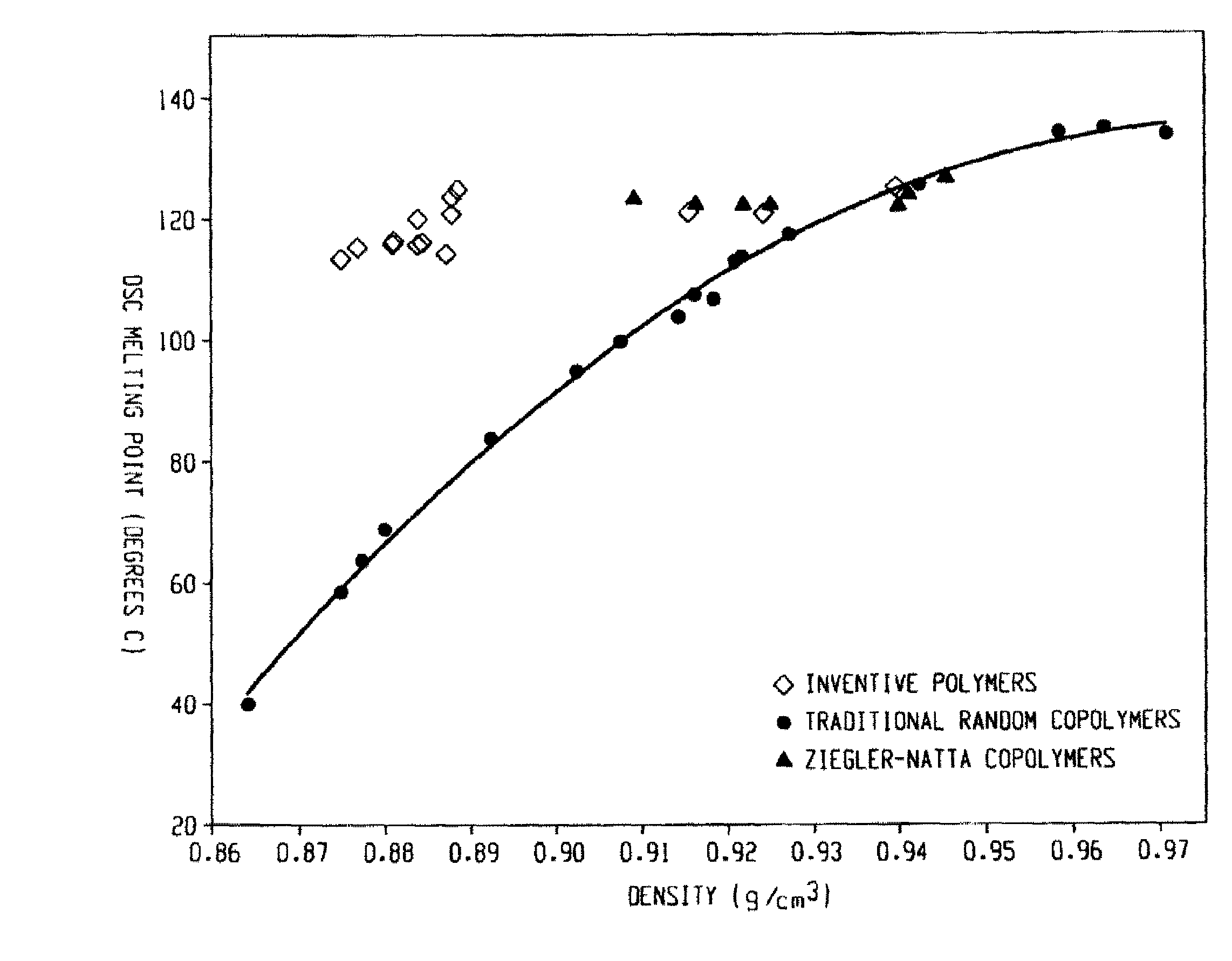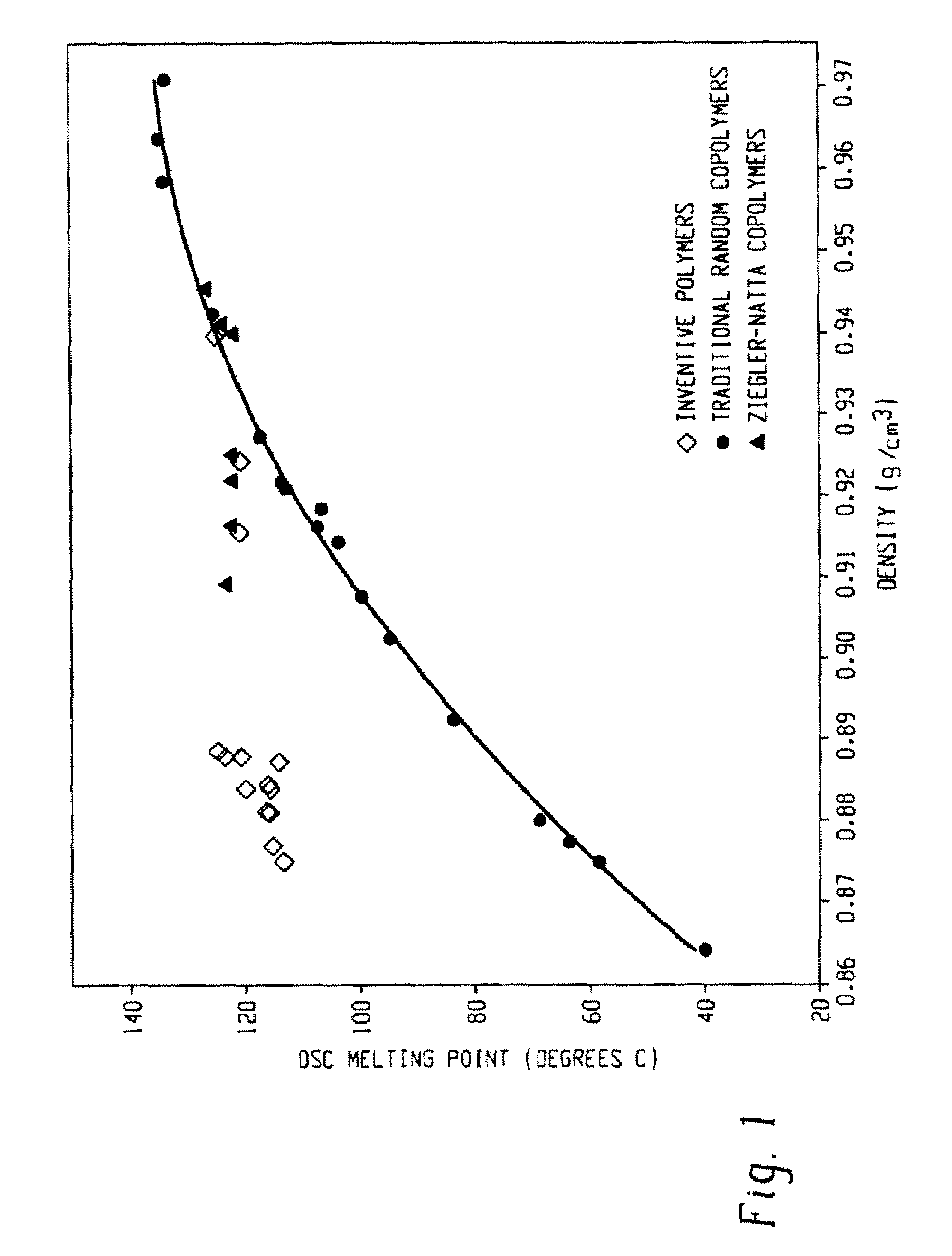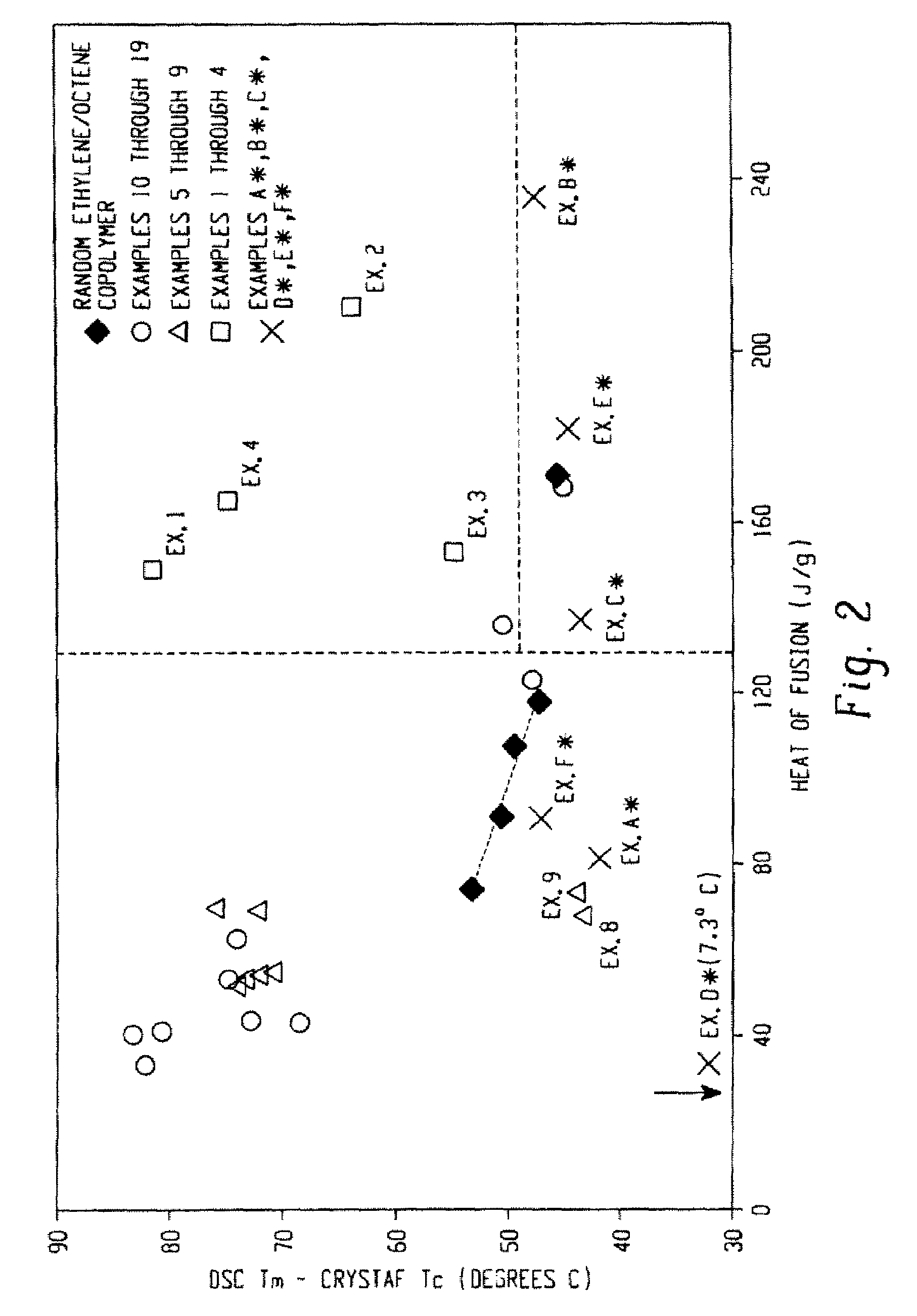Olefin block compositions for heavy weight stretch fabrics
a technology of olefin block and heavy weight, applied in the field of heavy weight fabrics, can solve the problems of not being able to stand up not being able to adapt well to industrial laundering conditions, and being difficult to incorporate into heavy bottom weight fabrics like denim, so as to improve the ratio of stretch and growth
- Summary
- Abstract
- Description
- Claims
- Application Information
AI Technical Summary
Benefits of technology
Problems solved by technology
Method used
Image
Examples
examples 1-4
demonstrate the synthesis of linear block copolymers by the present invention as evidenced by the formation of a very narrow MWD, essentially monomodal copolymer when DEZ is present and a bimodal, broad molecular weight distribution product (a mixture of separately produced polymers) in the absence of DEZ. Due to the fact that Catalyst (A1) is known to incorporate more octene than Catalyst (B1), the different blocks or segments of the resulting copolymers of the invention are distinguishable based on branching or density.
TABLE 1Cat. (A1)Cat (B1)CocatMMAOshuttlingEx.(μmol)(μmol)(μmol)(μmol)agent (μmol)Yield (g)MnMw / Mnhexyls1A*0.06—0.0660.3—0.13633005023.32—B*—0.10.1100.5—0.1581369571.222.5C*0.060.10.1760.8—0.2038455265.3025.510.060.10.192—DEZ (8.0) 0.1974287151.194.820.060.10.192—DEZ (80.0)0.146821611.1214.4 30.060.10.192—TEA (8.0) 0.208226751.714.640.060.10.192—TEA (80.0)0.187933381.549.41C6 or higher chain content per 1000 carbons2Bimodal molecular weight distribution
It may be seen...
examples 5-19
Comparatives D-F, Continuous Solution Polymerization, Catalyst A1 / B2+DEZ
Continuous solution polymerizations are carried out in a computer controlled autoclave reactor equipped with an internal stirrer. Purified mixed alkanes solvent (Isopar™ E available from ExxonMobil Chemical Company), ethylene at 2.70 lbs / hour (1.22 kg / hour), 1-octene, and hydrogen (where used) are supplied to a 3.8 L reactor equipped with a jacket for temperature control and an internal thermocouple. The solvent feed to the reactor is measured by a mass-flow controller. A variable speed diaphragm pump controls the solvent flow rate and pressure to the reactor. At the discharge of the pump, a side stream is taken to provide flush flows for the catalyst and cocatalyst 1 injection lines and the reactor agitator. These flows are measured by Micro-Motion mass flow meters and controlled by control valves or by the manual adjustment of needle valves. The remaining solvent is combined with 1-octene, ethylene, and hydrog...
example 19j
For Example 19J
Continuous solution polymerizations are carried out in a computer controlled autoclave reactor equipped with an internal stirrer. Purified mixed alkanes solvent (Isopar™ E available from ExxonMobil Chemical Company), ethylene at 2.70 lbs / hour (1.22 kg / hour), 1-octene, and hydrogen (where used) are supplied to a 3.8 L reactor equipped with a jacket for temperature control and an internal thermocouple. The solvent feed to the reactor is measured by a mass-flow controller. A variable speed diaphragm pump controls the solvent flow rate and pressure to the reactor. At the discharge of the pump, a side stream is taken to provide flush flows for the catalyst and cocatalyst injection lines and the reactor agitator. These flows are measured by Micro-Motion mass flow meters and controlled by control valves or by the manual adjustment of needle valves. The remaining solvent is combined with 1-octene, ethylene, and hydrogen (where used) and fed to the reactor. A mass flow control...
PUM
| Property | Measurement | Unit |
|---|---|---|
| temperature | aaaaa | aaaaa |
| molecular weight distribution | aaaaa | aaaaa |
| molecular weight distribution | aaaaa | aaaaa |
Abstract
Description
Claims
Application Information
 Login to View More
Login to View More - R&D
- Intellectual Property
- Life Sciences
- Materials
- Tech Scout
- Unparalleled Data Quality
- Higher Quality Content
- 60% Fewer Hallucinations
Browse by: Latest US Patents, China's latest patents, Technical Efficacy Thesaurus, Application Domain, Technology Topic, Popular Technical Reports.
© 2025 PatSnap. All rights reserved.Legal|Privacy policy|Modern Slavery Act Transparency Statement|Sitemap|About US| Contact US: help@patsnap.com



